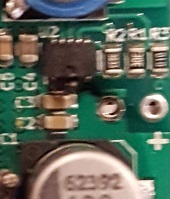HI,
I used tps62175 Step-Down Converter to make the DC-DC conversion on my board, from 24V to 5V. It works, schematic:
Now I faced with device certification. I failed En 61000-4-5 test for Class A (R=2 ohm and signal shape 8/20 us). Actually, I passed +500V impulse. On -500V impulse device failed, tps62175 blow up. I suppose that high negative voltage appears at tps62175 inputs.
I used unidirectional TVS diode SMBJ24. Does bidirectional diode resolve my problem?
Any suggestions will be helpful, thanks.
Apologies, If I use the wrong forum.


